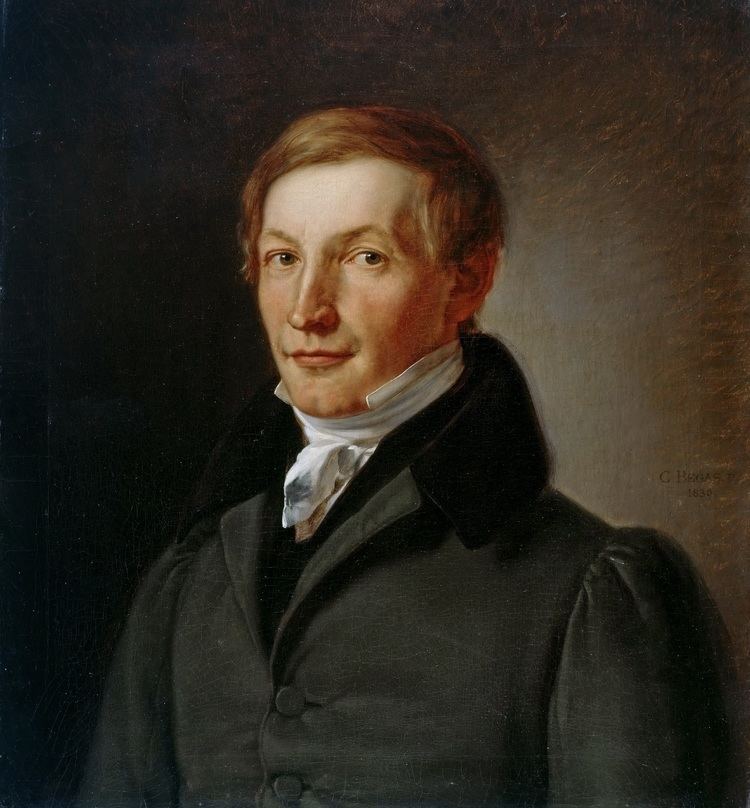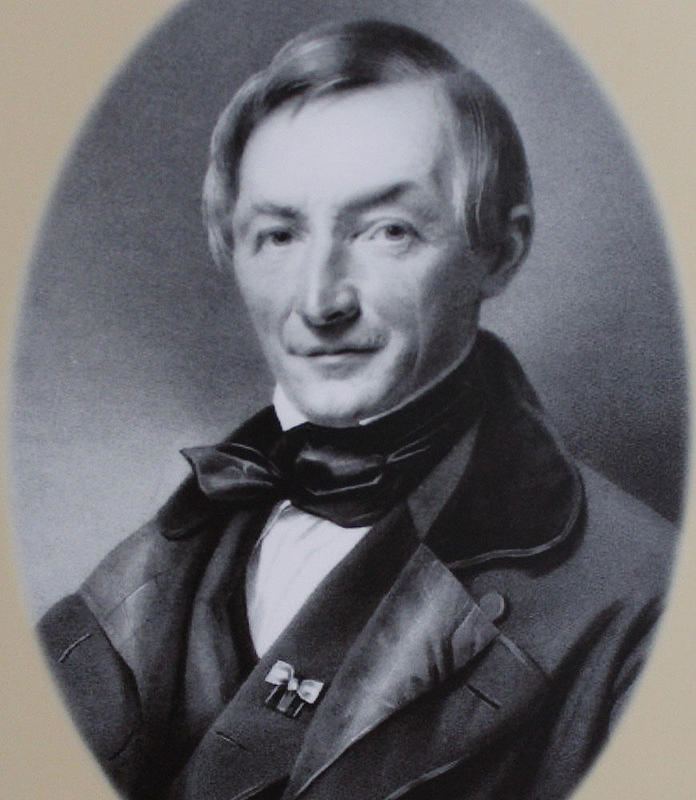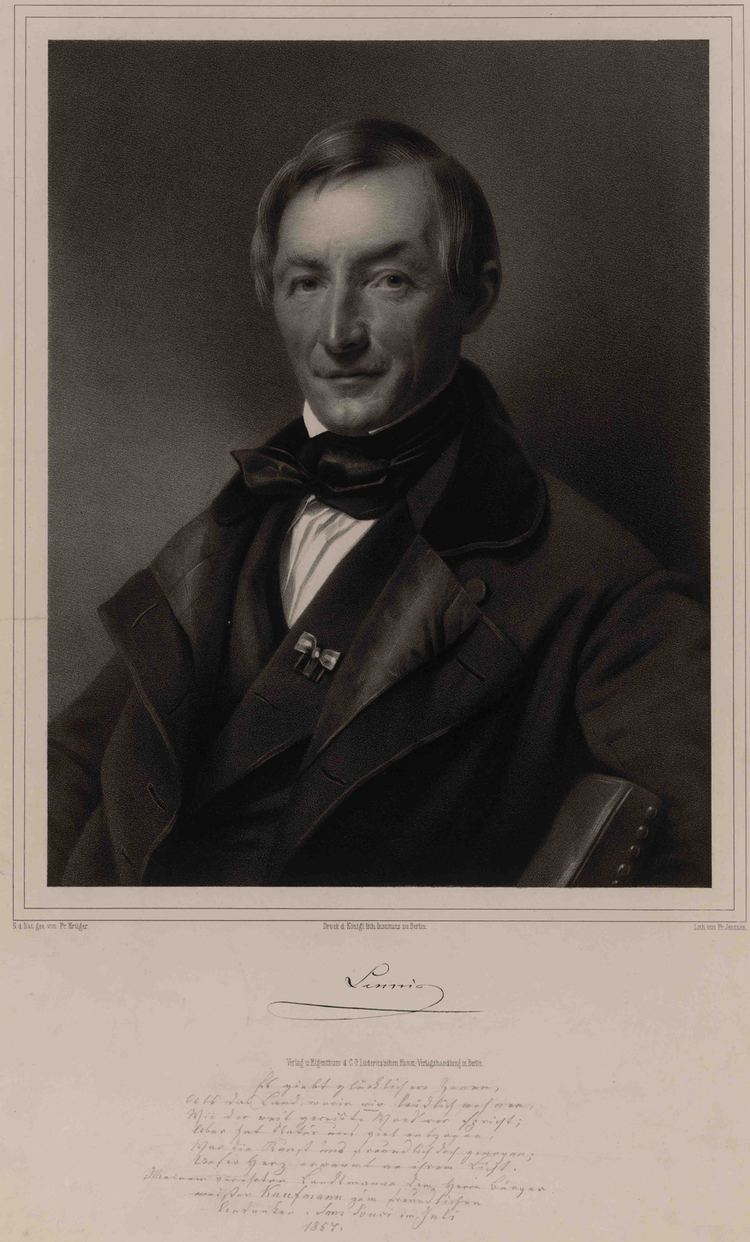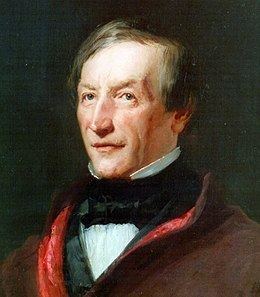Name Peter Lenne | Role Architect | |
 | ||
Died January 23, 1866, Potsdam, Germany | ||
Peter joseph lenn
Peter Joseph Lenné (the Younger) (29 September 1789 – 23 January 1866) was a Prussian gardener and landscape architect. As director general of the Royal Prussian palaces and parks in Potsdam and Berlin, his work shaped the development of 19th century German garden design in the Neoclassical style. Laid-out according to the principles of the English landscape garden, his parks are today part of the UNESCO World Heritage.
Contents
- Peter joseph lenn
- Peyzaj Mimarlnn ncleri 03 Peter Joseph Lenn
- Life and works
- Childhood and development
- Assistant gardener
- Prussian Garden Director General
- Main works
- References

Peyzaj Mimarlığı'nın Öncüleri 03 - Peter Joseph Lenné
Life and works

Lenné was born in Bonn, then part of the Electorate of Cologne, the son of the court and university gardener Peter Joseph Lenné the Elder (1756–1821), and his wife, Anna Catharina Potgieter (also Potgeter), daughter of the mayor of Rheinberg. The Lenné family descended from the Prince-Bishopric of Liège, Peter Joseph's ancestor Augustin Le Neu had settled in Poppelsdorf near Bonn as court gardener of Archbishop-Elector Maximilian Henry of Bavaria about 1665.
Childhood and development

Having obtained his Abitur degree, Peter Joseph Lenné decided to adopt the family tradition. He began his apprenticeship as a gardener in 1808 with his uncle, Josef Clemens Weyhe, court gardener at the electoral Augustusburg and Falkenlust Palaces, Brühl. At the instigation of his father, he also took university courses in botany.

From 1809 to 1812, Lenné took many study trips, paid for by his father, which took him to Southern Germany, to France, and to Switzerland. In 1811, he completed a long internship in Paris with Gabriel Thouin, who was then one of the most famous garden architects in Europe. This made him a master landscaper. On another of these trips, Lenné made the acquaintance of the creator of the English Garden in Munich, the landscape gardener Friedrich Ludwig von Sckell, who would have a lasting influence on Lenné's work.
Assistant gardener

In 1812, Lenné followed his father to Koblenz, where he had been named Director of the Gardens by the Prefect Jules Doazan. Later in that year, Lenné became active at Schloss Schönbrunn, where he would remain until 1814. He then returned to Koblenz, where he was given private garden commissions until 1815. Extensions to the city's fortifications gave him an opportunity to propose a plan for its beautification by the addition of gardens; however, this was not carried out because of lack of funds. In 1816, he returned to Potsdam at the suggestion of Prussian forestry official Georg Ludwig Hartig and General Graf von Hacke. There he received the position of Assistant Gardener to the Court Garden Director at Sanssouci.

While still working as an assistant gardener, in spring 1816 Lenné received a commission from the Prussian Chancellor Karl August von Hardenberg to renovate the grounds around his country house at Klein-Glienicke. This work on Glienicke Palace, which would later become Prince Carl of Prussia's residence, laid the groundwork for Lenné's designs for the surrounding area of Potsdam, which he wanted to turn into a Gesamtkunstwerk. The upgrades of the Glienicke grounds were followed - in close cooperation with the architects Karl Friedrich Schinkel, Ludwig Persius, and Ferdinand von Arnim - by those of others such as the Böttcherberg and facing it Babelsberg Park, which was completed by Prince Hermann von Pückler-Muskau. Characteristic of Lenné's work are versatile sight axes - a horticultural stylistical device - which he applied at Sanssouci Park and elsewhere. As part of the Berlin-Potsdam cultural landscape, which stretches from the Pfaueninsel to Werder, many sites of Lenné's work are World Heritage Sites and have been under the protection of UNESCO collectively since 1990.
Prussian Garden Director-General
The accomplishments of the garden architect are reflected in his career progression. In 1818 he was an employee of the Royal Garden Authority, and in 1822, he received a promotion to Gardening Director. That same year, Lenné became a founding member of the Prussian Society for the Promotion of Horticulture. Lenné also accepted the position of Manager of the Division of Orchard Cultivation and later of the Parks Division.
In 1823, the Gardener Academy in Schöneberg and Potsdam was founded under his management. Here garden architecture was taught in a scientific manner for the first time. In 1828, Lenné was named the sole Garden Director and in 1845, Prussian Garden Director-General. The Prussian Academy of Arts made Lenné an honorary member.
In 1840, the recently enthroned King Friedrich Wilhelm IV assigned the urban planning of Berlin to Lenné. One of his most important achievements in this role survives in the building of the Luisenstadt Canal, constructed in 1852, between the Landwehrkanal and the River Spree in Kreuzberg. The canal's design was based on plans by Chief Building Officer Johann Carl Ludwig Schmid.
Despite centering his life around Potsdam and Berlin, Lenné remained attached to his Rhenish homeland and contributed to the further beautification of Koblenz, particularly in the Rheinanlagen, which was under his management until 1861. His love of his work on the Rhine and Mosel made him decide to build the residence named for him, the Lenné-Haus, in which he wished to spend the evening of his life; however, the manner of his death did not allow this. Lenné's last resting place is at the Bornstedt Cemetery in Potsdam.
Busts of Peter Joseph Lenné are located at the Bonn Botanical Garden, on the bank of the Rhine (Alter Zoll), in the Landschaftspark Petzow that he himself designed, in Feldafing Park, in Park Sanssouci, and in the Kaiserin-Augusta-Anlagen in Koblenz (copy of a bust by Rauch). A recent bust was finished by Bad Homburg sculptor Otto Weber-Hartl.
